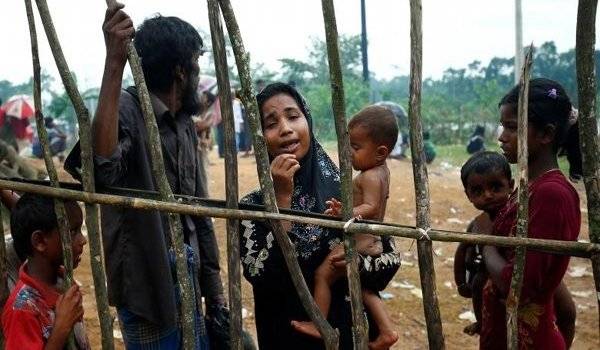Mass graves of Rohingya Muslims unearthed, corpses without heads, faces burnt with acid
Shares

TEHRAN - The Associated Press confirmed the existence of 5 newly discovered mass graves in Myanmar, and reports in vivid detail on massacres of civilians in an ongoing campaign of horrors by Myanmar's military, "with help from Buddhist neighbors", that the AP notes "looks increasingly like a genocide".
The Associated Press on Wednesday published a report detailing the existence of several previously undisclosed mass graves of Rohingya Muslims in Myanmar along with shocking details of the systematic execution of victims and attempts to hide evidence of the crime.
The report relied on interviews with more than two dozen refugees who managed to escape from soldiers and flee to neighboring Bangladesh at the start of a brutal military crackdown on the Rohingya in August 2017, as some of the survivors provided the news agency with time-stamped cellphone videos supporting their claims.
The AP uncovered evidence of at least five mass graves at one location, Gu Dar Pyin, as the news agency reported that the mass graves, all previously unreported, kept corpses of men half-buried, with their faces burned away by acid or blasted by bullets.
About 200 soldiers swept into the area on August 27, according to witnesses.
“The soldiers carefully planned the August 27 attack, and then deliberately tried to hide what they had done. They came to the slaughter armed not only with rifles, knives, rocket launchers, and grenades, but also with shovels to dig pits and acid to burn away faces and hands so that the bodies could not be identified,” the survivors of the attack were cited as recounting.
“Buddhist villagers then moved through Gu Dar Pyin in a sort of mopping-up operation, using knives to cut the throats of the injured, and working with soldiers to throw small children and the elderly into the fires,” they added.
In one case, a survivor named as Kadir, was quoted as saying that he and 14 other civilians, all Rohingya Muslims in the Gu Dar Pyin Village, had been preparing to play a soccer-like game when the gunfire began and that by the time the Myanmar military stopped shooting, only three, including him, were left alive.
Kadir added that he had found six of his friends among the dead bodies in two graves, adding that “It was a mixed-up jumble of corpses piled on top of each other.”
One of them, Mohammad Sha, 37, a shop owner and farmer, told the news agency that he "hid in a grove of coconut trees near a river with more than 100 others, adding that they watched as the military searched Muslim homes and dozens of Buddhist neighbors, their faces partly covered with scarves, loaded the possessions they found into about 10 pushcarts. Then the soldiers burned down the homes, shooting anyone who couldn't flee.
"Myanmar has cut off access to Gu Dar Pyin, so it's unclear just how many people died, but satellite images obtained by the AP from DigitalGlobe show a village decimated. Community leaders have compiled a list of 75 dead so far, and villagers estimate the toll could be as high as 400, based on testimony from relatives and the bodies they've seen in the graves and strewn about the area," the news agency wrote.
Almost every villager interviewed by the AP saw three large mass graves at Gu Dar Pyin's Northern entrance, near the main road, where witnesses say soldiers herded and killed most of the Rohingya. A handful of witnesses confirmed two other big graves near a hillside cemetery, and smaller graves scattered around the village.
The AP reported that cellphone video shot by survivors show "blue-green puddles of acid sludge [surrounding] corpses without heads and torsos that jut out from the earth, skeletal hands seeming to claw at the ground."
Local officials contacted by the news agency claim to know nothing of mass graves and Myanmar's government has repeatedly denied any organized campaign against the Rohingya.
More than 655,000 of Myanmar's Muslim minority have fled across the border to Bangladesh since late August when the Myanmar army launched a sweeping crackdown on Rohingya Muslims in Northern Rakhine state.
The UN has already described the Rohingya as the most persecuted community in the world, calling the situation in Rakhine similar to “a textbook example of ethnic cleansing”.
The Myanmarese government, however, denies committing atrocities against the Rohingya people and has even rejected UN criticism for its “politicization and partiality”.
UN High Commissioner for Human Rights Zeid Ra‘ad al-Hussein stressed that attacks on the Rohingya had been “well thought out and planned” and he had asked Myanmar’s de facto leader to do more to stop the military atrocities.
